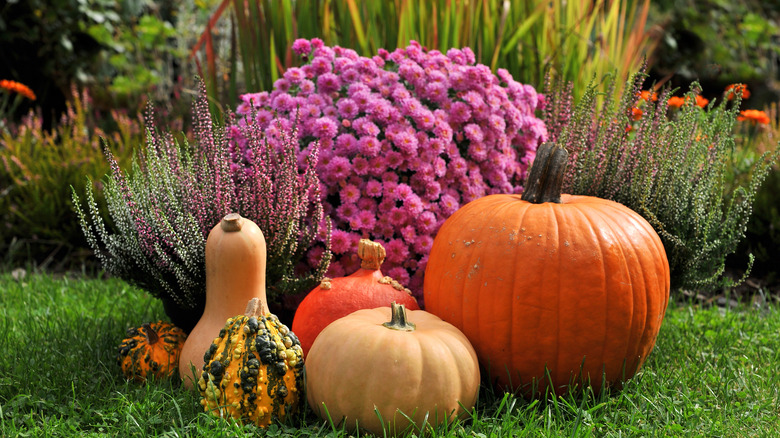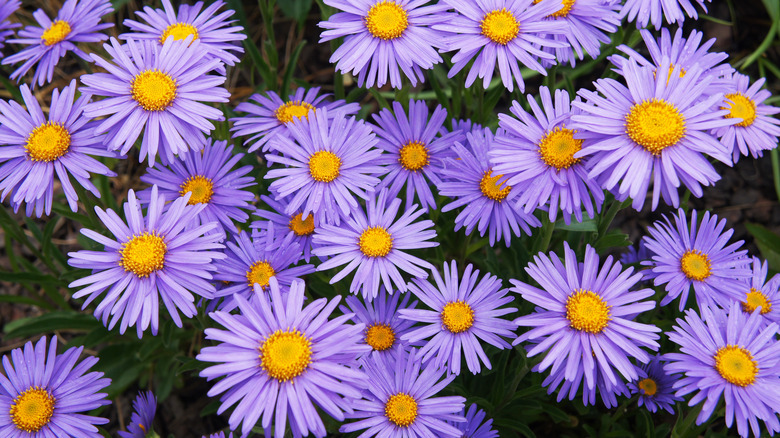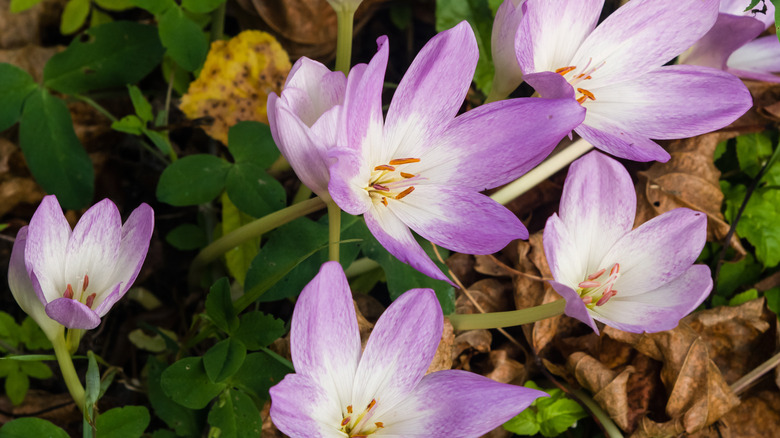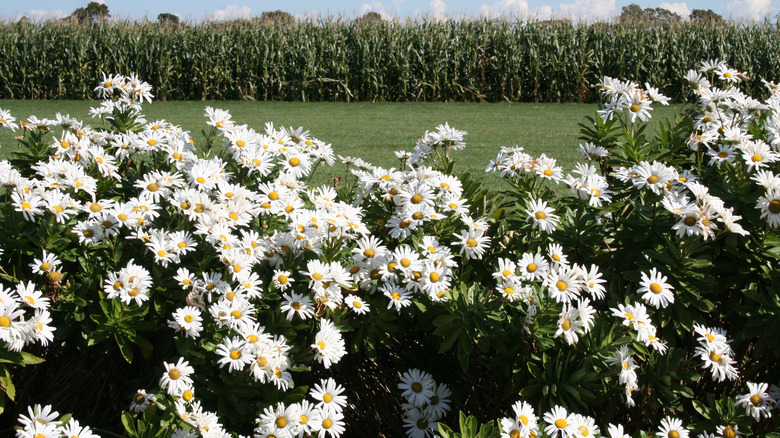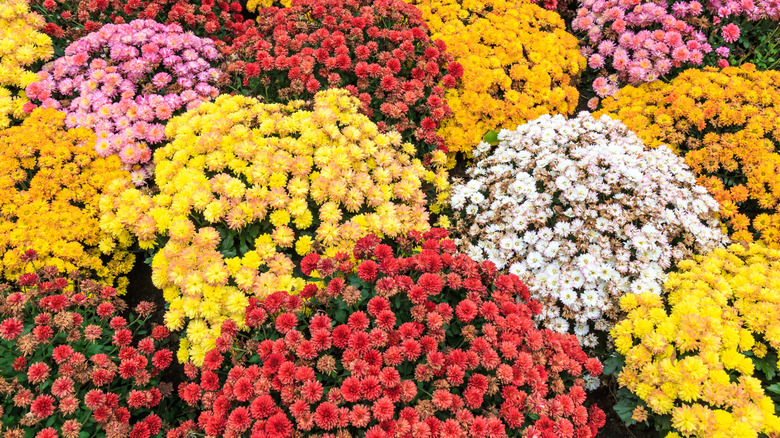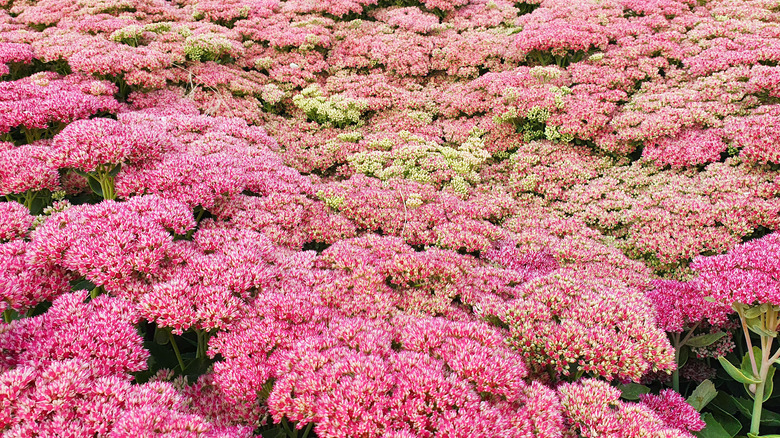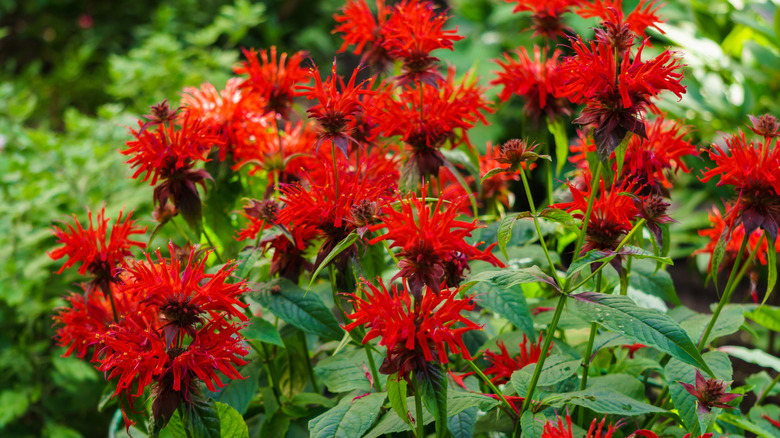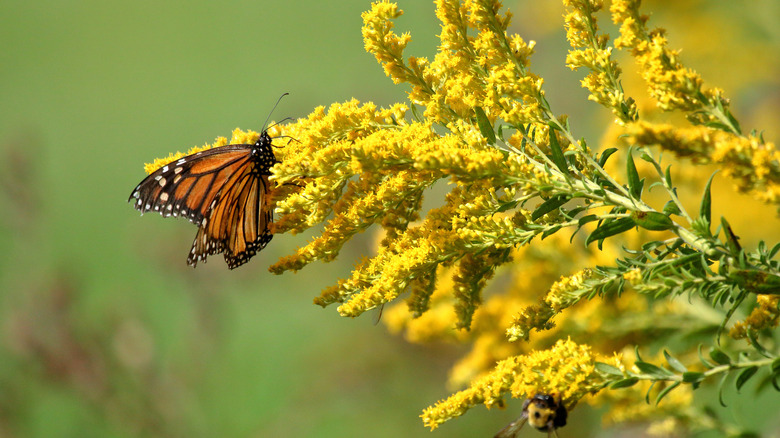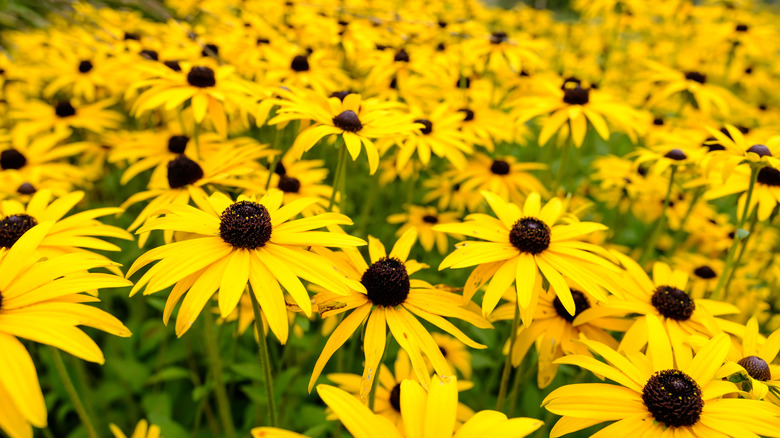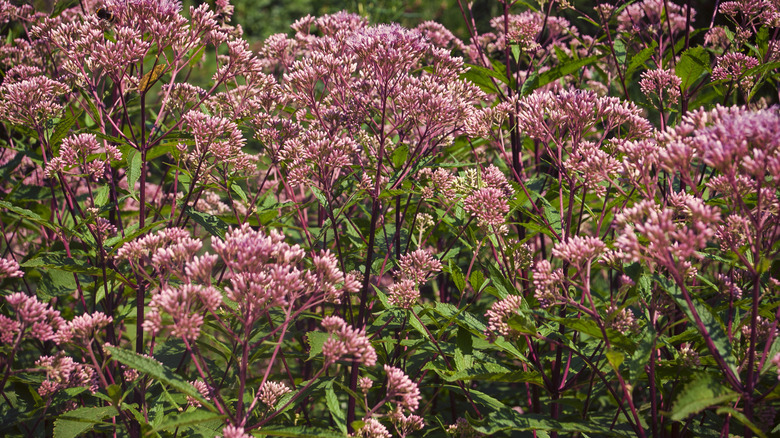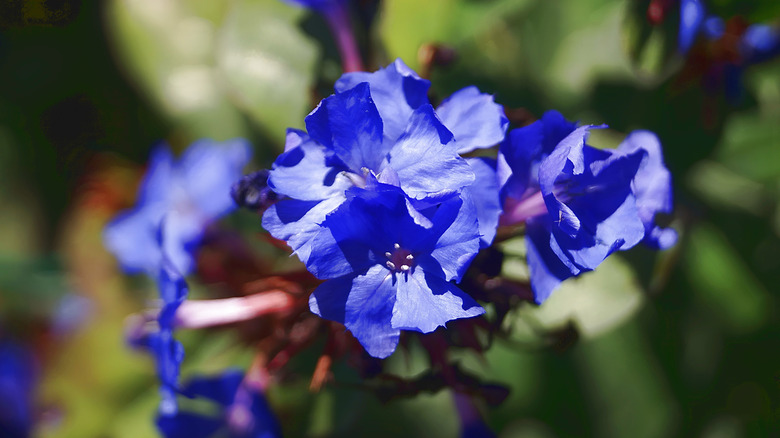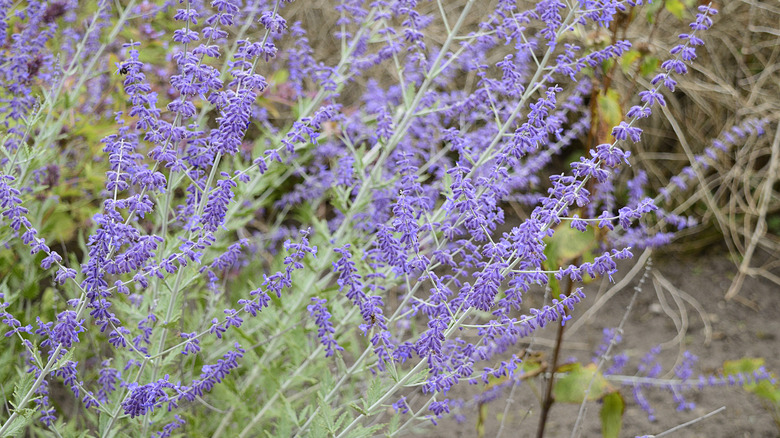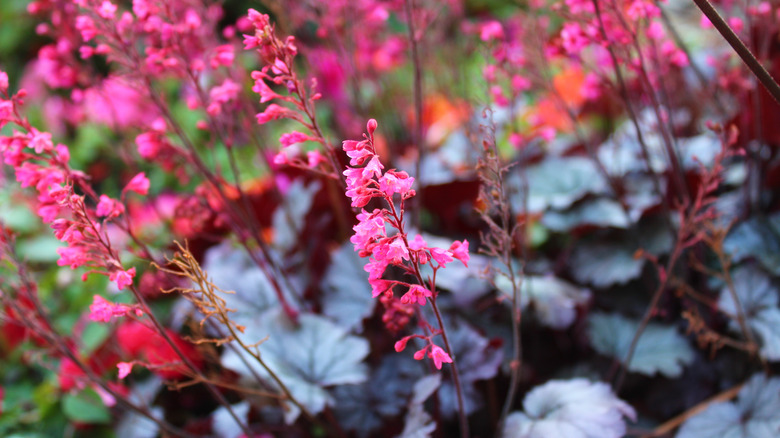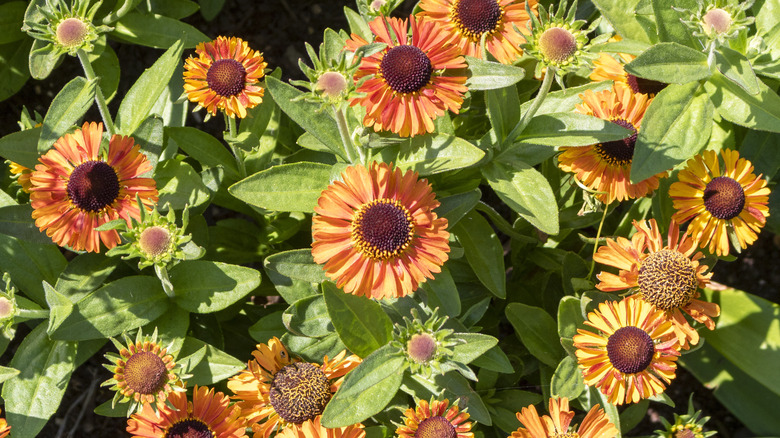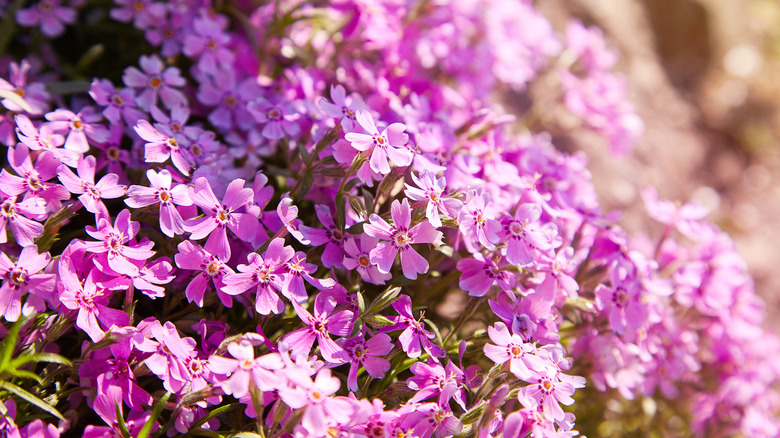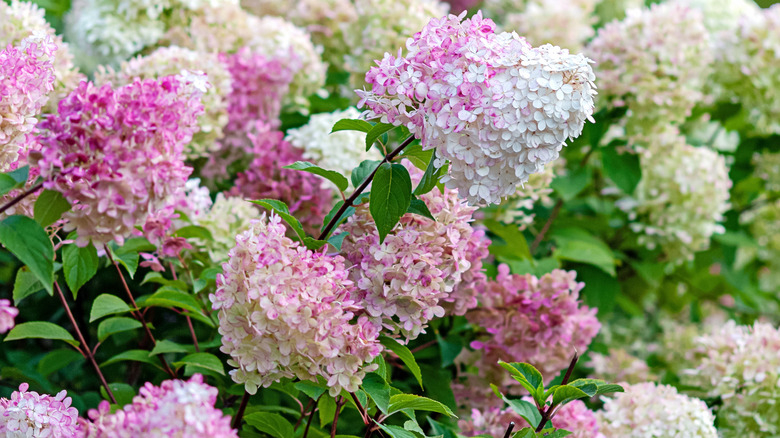15 Perennials That Will Bloom Every Autumn
As the days grow shorter and the nights cooler, many plants die back, preparing for winter. But a few stalwart flowers refuse to be deterred by the changing seasons. These tough plants bloom every autumn, bringing color and life to the garden as everything else begins to fade. One of the best things about these flowers is that they don't require much maintenance. Once they're established, they will come back year after year, providing you with beautiful blooms even as the seasons change. Perennials are a type of plant that lives for more than two years. The most common type is the herbaceous perennial, which has soft leaves and stems. There are also woody perennials, which have stiff stems.
One great reason to plant a perennial is so bees, birds, and other pollinators can still find food, according to Gardening. If you're looking for a way to add color to your garden this fall, consider planting one of these lovely hardy perennials. You'll be glad you did when the flowers start to bloom! Many of these flowers also make fabulous cuttings so that you can create a beautiful autumnal display indoors.
1. Aster
Asters (Asteraceae) are hardy little flowers that will add a bit of color to your garden. These beautiful flowers are available in pink, blue, and lavender and are rich in nectar, making them highly sought after by birds and insects. According to Costa Farms, asters love the sunlight, and the experts recommend staking them early. They also make excellent cut flowers, too.
Bloom Season: Late summer to early fall
USDA Growing Zone: 4 to 8
Growing Conditions: Full sun
Soil Type: Well draining loam
Size: Can grow up to 6 feet and 4 feet wide
2. Autumn crocus
Autumn crocus (Colchicum autumnale) is produced from a bulb, much like the spring crocus. According to the North Carolina Extension Gardener Plant Toolbox, they should be sown in the late summer for a fall arrival. They bloom in beautiful colorful varieties that will keep your garden bright well after light frostings. It can even withstand temperatures down to -4 degrees Fahrenheit, making it a very hardy plant.
Bloom Season: Early fall
USDA Growing Zone: 4 to 9
Growing Conditions: Full sun to partial shade
Soil Type: Loam
Size: Up to 9 inches tall and wide
3. Nippon daisy
Nippon daisy (Nipponanthemum nipponicum) is also sometimes referred to as the Montauk daisy because they have been naturalized along parts of New York, such as Long Island and New Jersey. They feature beautiful daisy-like flowers that are especially popular among bees and butterflies. Plant Care Today states that these hardy little flowers will keep blooming until a hard frost.
Bloom Season: Early fall to mid-winter
USDA Growing Zone: 5 to 9
Growing Conditions: Full sun
Soil Type: Well draining, slightly acidic
Size: Up to 3 feet tall and wide
4. Chrysanthemum
When you think of fall flowers, chrysanthemums (Chrysanthemums) is one of the top ones that come to mind. They're typically found in the fall; you can sow them into the ground and see them the following year. If you live in certain parts of the U.S., they're relatively hardy flowers; an example is the Mammoth Daisy, according to Gilmour.
Bloom Season: Late summer to early winter
USDA Growing Zone: 5 to 9
Growing Conditions: Full sun
Soil Type: Well-drained soil
Size: Up to 3 feet tall by 3 feet wide
5. Autumn Joy sedum
Autumn Joy sedum (Hylotelephium 'Herbstfreude') has a yearlong appeal. In spring, you will see little leaves growing; tiny pink flowers emerge in summer. Then comes fall, when this sizeable succulent plant shows its true colors — lovely red or pink shades. At that point, the blooming flowers will begin attracting pollinators. Walter's Gardens shares that this perennial can be grown in shrubbery because of its tall characteristics.
Bloom Season: Fall
USDA Growing Zone: 3 to 9
Growing Conditions: Full sun
Soil Type: Well-drained soil
Size: Up to 2 feet tall and wide
6. Bee balm
Bee balm (Monarda) is a perennial that starts to bloom in the spring and summer. However, you can enjoy its blooms throughout the fall. Their blossoms almost look like miniature fireworks bursting, which is sure to add much color to your fall garden. Mt. Cuba Center shares that while these plants can be small, they can also grow pretty high.
Bloom Season: Summer through mid-fall
USDA Growing Zone: 4 to 9
Growing Conditions: Full sun
Soil Type: Clay or loam
Size: Up to 4 feet tall and 3 feet wide
7. Goldenrod
Goldenrod (Solidago chilensis) is spectacular, especially during fall when the leaves change. While usually confused for ragweed, they are two different plants. The North Carolina Extension Gardener Plant Toolbox shares that this flower, unlike others, does not need to be fertilized. Goldenrod attracts many pollinators, making it great for a butterfly garden.
Bloom Season: Late summer through fall
USDA Growing Zone: 4 to 9
Growing Conditions: Full sun to partial shade
Soil Type: Clay, sand, or loam
Size: Uo to 3 feet tall and wide
8. Black-eyed Susan
Wildflower states that black-eyed Susans (Rudbeckia fulgida) are highly deer-resistant flowers. They're relatively easy to grow and will thrive in most conditions. The flowers are daisy-like in shape and bloom through mid-fall, giving your garden a showy display of bright yellow flowers. Underneath this beautiful flower is a rosette of gorgeous green leaves that can make attractive ground cover during the winter season.
Bloom Season: Late summer through mid-fall
USDA Growing Zone: 3 to 9
Growing Conditions: Full sun to partial shade
Soil Type: Clay
Size: Can grow up to 3 feet tall and 2 feet wide
9. Joe-pye weed
Boasting beautiful rose-pink-colored blooms, Joe-pye weed (Eutrochium maculatum) is an attractive flower that would fit nicely into your fall garden. They offer fragrant blooms, according to Plant Care Today. These scents attract many pollinators during the blooming season. When the flowers go to seed, the seeds will begin to drop, and during the following season, you may find yourself with even more blooms than before!
Bloom Season: Late summer through mid-fall
USDA Growing Zone: 4 to 9
Growing Conditions: Full sun to partial shade
Soil Type: Well-drained soil
Size: Up to 6 feet tall and 2 feet wide
10. Hardy plumbago
Hardy plumbago (Ceratostigma plumbaginoides) is a perennial providing good ground cover, especially in fall when other seasonal blooms have finished their show. They offer a beautiful sky-blue color, adding interest and dimension to your garden. According to Piedmont Master Gardeners, finding an actual blue flower is challenging, as most are a lavender shade — but hardy plumbago shines beautifully.
Bloom Season: Late summer through mid-fall
USDA Growing Zone: 5 to 9
Growing Conditions: Full sun
Soil Type: Moist and rich soil
Size: Can grow up to 10 inches tall and 18 inches wide
11. Russian sage
Russian sage (Salvia yangii) is a shrub that flowers with lovely tubular purple blossoms each summer. This plant is not susceptible to any diseases or insects. American Meadows shares that Russian sage is very low-maintenance, and deadheading isn't needed. Despite its name, this plant is not native to Russia. The flower was named after a Russian general from the 1800s, V.A. Perovski.
Bloom Season: Summer to late fall
USDA Growing Zone: 4 to 9
Growing Conditions: Full sun
Soil Type: Well drained, dry soil
Size: Can grow up to 4 feet tall and wide
12. Coral bells
Coral bells (Heuchera), often grown for their foliage, produce gorgeous little pink flowers on stems. Butterflies and other pollinators favor these blooms. After the flowers have gone away for the season, the foliage of this plant continues to produce colors that will deepen when air temperatures drop. According to Garden Beast, they also take well to most soil conditions and temperatures.
Bloom Season: Summer to early fall
USDA Growing Zone: 4 to 9
Growing Conditions: Full sun to partial shade
Soil Type: Moist, well-drained soil
Size: Can grow up to 1.5 feet tall and 2 feet wide
13. Common sneezeweed
Common sneezeweed (Helenium autumnale) doesn't make one sneeze. According to New Moon Nursery, this flower is a beautiful choice for pollinators, and thus, the pollen is too sticky to be carried into the wind to make someone sneeze. Blooms come in bright yellow to orange-copper during the fall season and last for two to three months.
Bloom Season: Summer to late fall
USDA Growing Zone: 3 to 9
Growing Conditions: Full sun to partial shade
Soil Type: Moist, well-drained, silt soil
Size: Can grow up to 5 feet tall and 3 feet wide
14. Phlox
Phlox (Phlox) is known for its charming, bountiful blooms. Longfield Gardens suggests planting a species offering bigger blooms for an abundance of flowers. The flowers grow in various colors, including pink, white, red, and blue. They provide some fragrance, a sweet smell often described as light vanilla or sometimes honey-scented. These lovely flowers grow in the spring, summer, and fall.
Bloom Season: Summer through fall
USDA Growing Zone: 4 to 8
Growing Conditions: Full sun to partial shade
Soil Type: Well-drained soil
Size: Can grow up to 5 feet tall by 3 feet wide
15. Panicled hydrangea
Panicled hydrangeas (Hydrangea paniculata) are deciduous shrubs that produce little clusters of star-shaped flowers. These blooms include tan or cream, white, green, or pink. According to Proven Winners, they're winter-tolerant and need no special treatment. During the later fall months, the foliage turns to a lovely yellow that stands out in any fall garden after the flowers wither.
Bloom Season: Early summer through mid-fall
USDA Growing Zone: 3 to 8
Growing Conditions: Full sun to partial shade
Soil Type: Well-drained clay, loam, or sand
Size: Can grow up to 15 feet tall and 8 feet wide
